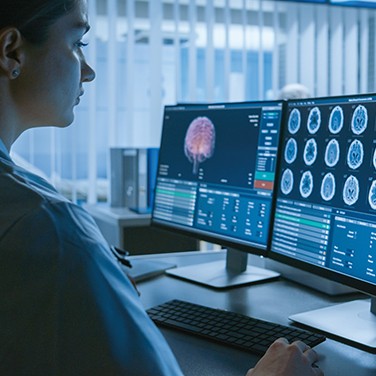Finding New Ways to Go Digital
By Kylie Wolfe
With the constant introduction of new technologies, life in the lab continues to evolve. Scientists today have different ways of conducting their work than, say, scientists 50 years ago. Many are using technology to advance their research, contributing valuable information and insights to collaborative efforts, and improving science and society.
Technology in your lab can not only make collaboration more effective, but enhance your day-to-day processes. With the creation of laboratory information management systems, electronic lab notebooks, and other digital platforms, it’s easier than ever to stay organized and share information.
Finding New Ways to Manage Data
Managing laboratory data can be complex, but it’s imperative and requires consistent organization. Laboratory information management systems (LIMS) digitize hard-copy record keeping to streamline operations. They can help you track inventory, minimize errors, and improve the quality of your results.
With a LIMS, you can efficiently manage hundreds, if not thousands, of samples. These systems make it easy to store, track, and organize them to meet the needs of your lab. You can assign unique IDs to samples and maintain a profile of information for each patient, including demographics, medical history, and other insights.
Protecting your data is just as important as effectively managing it. LIMS also allow you to grant access privileges to certain users to protect your information and prevent unauthorized access.
It's easier than ever to stay organized and share information.
Going Digital
Sharing and storing laboratory data hasn’t always been simple. Traditional spreadsheets and paper notebooks are common, but cumbersome. Electronic laboratory notebooks (ELN) can help you exchange physical notes for digital ones.
Sorting through file cabinets to track down a protocol you worked with five years ago can use up valuable time. Not only is it hard to find what you’re looking for, but once you’ve found the right notebook, you may notice that you left out a key step or can’t read your writing. Without the right level of detail, it’s challenging to achieve reproducible results. And you can’t exactly go back in time. With ELNs, you can access custom protocol templates, import images, and add annotations with a simple search.
Finding the right ELN for your colleagues can make data creation and retrival more efficient, optimizing your time, effort, and funds. Sharing projects and protocols can also make it easier to collaborate with and support your fellow scientists.
Collaborating Inside the Lab and Out
According to labfolder.com, only 10 percent of researchers use ELNs. But with an ever-growing digital trend, this may be another opportunity for scientists to remain at the forefront of innovation.
And as laboratories faced unexpected closures at the beginning of this year, many had to rely on digital platforms. Though this was more challenging for laboratories where experiments require hands-on attention, it was necessary to find creative ways to stay productive.
Researchers kept in touch through video conferencing, online chats, screen sharing, and other collaborative programs. Lab meetings went virtual as many turned to technology to keep colleagues connected.
As a scientific community, there are many ways to continue sharing, innovating, and discovering. Maybe you’ll find a new way to not only manage your lab’s data, but to maintain a more digital presence in the future.

Related Articles
Related Products
Replenish. Renew. Restart.
Find the lab supplies and PPE you need to return to work confidently.